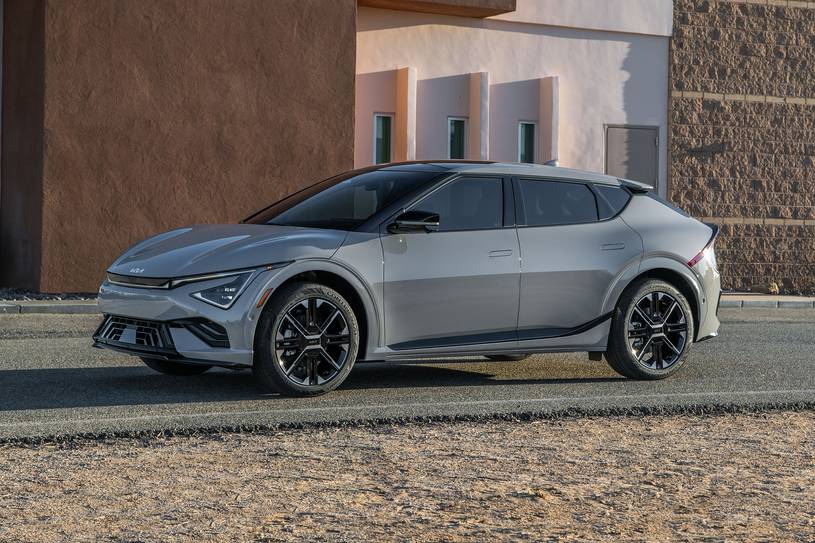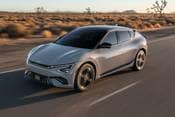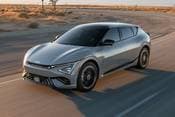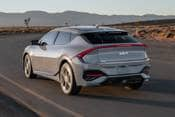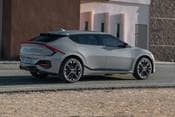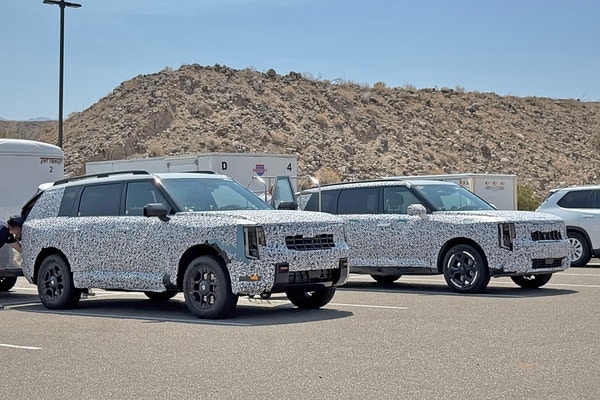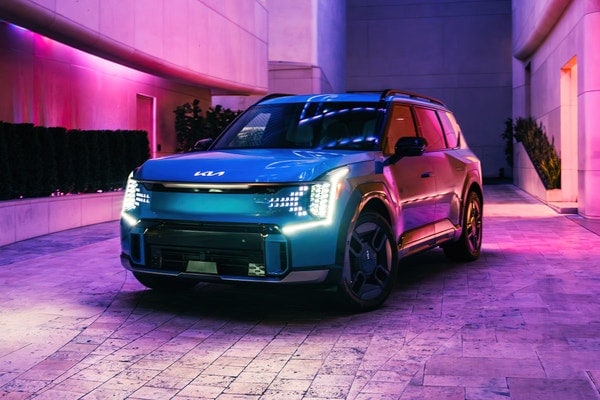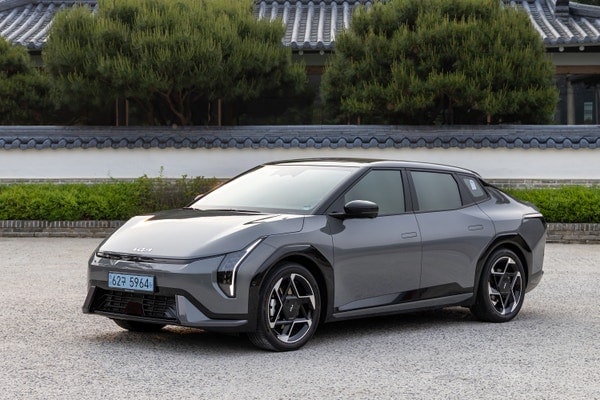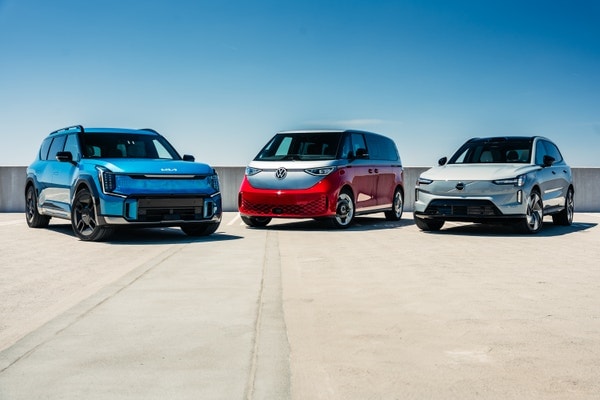2025 Kia EV6
Price Range: $42,900 - $63,800
Helpful shopping links
2025 Kia EV6 video
These Are the Best American-Made Cars on Sale Today
You might assume that vehicles built by American companies tend to be built in the U.S. and have a high percentage of American parts, but that's not always the case – in fact, many foreign-make vehicles have a higher percentage of American-made components than cars from domestic manufacturers. In this video, Edmunds' Brian Wong goes over our favorite American-made cars… currently on sale, including what percentage of their parts come from the good ol' U.S. of A.
PRICE CHECKER™
Check a dealer's price
Bring back a dealer's quote, and we'll tell you if it's a good price!
Check your price quote
Price:
$ -
Graph shown is a sample only
FAQ
Is the Kia EV6 a good car?
The Edmunds experts tested the 2025 EV6 both on the road and at the track. Edmunds’ consumer reviews show that the 2025 EV6 gets an average rating of 4 stars out of 5 (based on 41 reviews) What about cargo capacity? When you're thinking about carrying stuff in your new car, keep in mind that the EV6 has 24.4 cubic feet of trunk space. And then there's safety and reliability. Edmunds has all the latest NHTSA and IIHS crash-test scores, plus industry-leading expert and consumer reviews to help you understand what it's like to own and maintain a Kia EV6. Learn more
What's new in the 2025 Kia EV6?
According to Edmunds’ car experts, here’s what’s new for the 2025 Kia EV6:
- Refreshed styling inside and out
- Larger batteries with increased range
- Output for EV6 GT increases from 576 horsepower to a max of 641 hp
- Non-GT models will adopt the Tesla-style NACS charging port
- Part of the first EV6 generation introduced for 2022
Is the Kia EV6 reliable?
To determine whether the Kia EV6 is reliable, read Edmunds' authentic consumer reviews, which come from real owners and reveal what it's like to live with the EV6. Look for specific complaints that keep popping up in the reviews, and be sure to compare the EV6's 4-star average consumer rating to that of competing vehicles. Learn more
Is the 2025 Kia EV6 a good car?
There's a lot to consider if you're wondering whether the 2025 Kia EV6 is a good car. Our consumer reviews show that the 2025 EV6 gets an average rating of 4 stars out of 5 (based on 41 reviews). Safety scores, fuel economy, cargo capacity and feature availability should all be factors in determining whether the 2025 EV6 is a good car for you. Learn more
How much should I pay for a 2025 Kia EV6?
The least-expensive 2025 Kia EV6 is the 2025 Kia EV6 Light 4dr SUV (electric DD). Including destination charge, it arrives with a Manufacturer's Suggested Retail Price (MSRP) of about $42,900.
Other versions include:
- Light 4dr SUV (electric DD) which starts at $42,900
- Light Long Range 4dr SUV (electric DD) which starts at $46,200
- Wind 4dr SUV (electric DD) which starts at $50,300
- Light Long Range 4dr SUV AWD (electric DD) which starts at $50,300
- GT-Line 4dr SUV (electric DD) which starts at $54,200
- Wind 4dr SUV AWD (electric DD) which starts at $54,300
- GT-Line 4dr SUV AWD (electric DD) which starts at $58,900
- GT 4dr SUV AWD (electric DD) which starts at $63,800
What are the different models of Kia EV6?
If you're interested in the Kia EV6, the next question is, which EV6 model is right for you? EV6 variants include Light 4dr SUV (electric DD), Light Long Range 4dr SUV (electric DD), Wind 4dr SUV (electric DD), and Light Long Range 4dr SUV AWD (electric DD). For a full list of EV6 models, check out Edmunds’ Features & Specs page. Learn more
Is there an EV tax credit or rebate for the 2025 Kia EV6
The 2025 Kia EV6 qualifies for a total of $7,500 in tax credits and rebates. See all incentives for the 2025 Kia EV6
